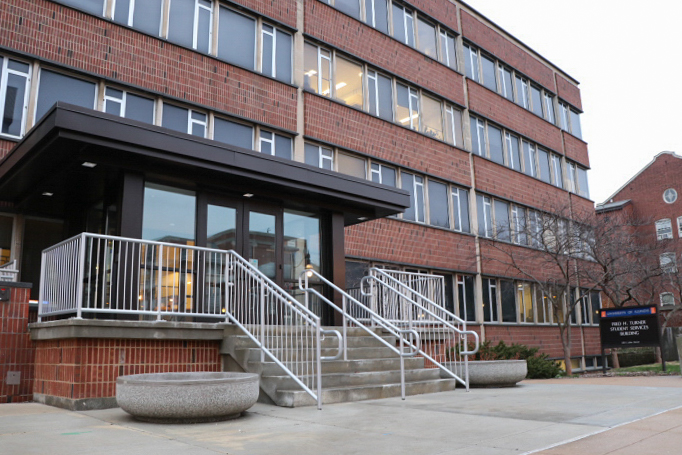Keep your beginning-of-the-year stress in check
The Counseling Center is located inside the Fred. H. Turner Student Services Building.
Sep 9, 2017
 With “syllabus week” coming to a close, students are already beginning to feel the onset of the all-too-familiar stress of assignments and commitments. However, this familiarity often leads to students dismissing excessive stress, resulting in an inability to identify mental health issues such as anxiety or depression that are becoming more common among the college student demographic.
With “syllabus week” coming to a close, students are already beginning to feel the onset of the all-too-familiar stress of assignments and commitments. However, this familiarity often leads to students dismissing excessive stress, resulting in an inability to identify mental health issues such as anxiety or depression that are becoming more common among the college student demographic.
Arguably, the beginning of the school year is one of the most stressful times of the year. Students are adjusting to the rhythm of a new schedule and diving back into assignments after an extended break.
Freshmen have the added pressures of making friends, joining extracurriculars and getting used to a huge, unfamiliar environment. For upperclassmen, the beginning of the year is often when the summer internship search is at full force.
According to the National Health College Assessment in 2016, 17 percent of students responded that they were diagnosed or treated by a professional for anxiety, 14 percent for depression and 10.7 percent for both within the last 12 months. In addition, almost half of the student respondents stated that academics have been “traumatic or very difficult to handle” within the last 12 months.
While the recent proliferation of mental illness within college campuses is evident, the social understanding of the situation has not caught pace to the growing numbers.
Get The Daily Illini in your inbox!
A 2012 analysis published in the U.S. National Institutes of Health’s National Library of Medicine compiled 36 different studies from 1987 to 2011 examining stigmatizing beliefs, actions and attitudes toward mental illness. While social perception of receiving help improved over time, there were no significant improvements in the effectiveness of treatment.
A 2006 survey by HealthStyles reported similar results, with only a quarter of young adults believing that a person with mental illness can eventually recover.
However, mental illness can be often mishandled or misunderstood by non-professionals. Providing casual advice or offering words of encouragement may not be enough to help an individual looking for help.
A school counselor, who is trained to approach mental health in the most effective way, can provide an accurate diagnosis and appropriate options for treatment that a close friend most likely cannot.
Making school counseling services more visible, present and prominent on campus is the most effective way to break the social stigma of the ineffectiveness of mental health counseling.
While the Counseling Center at the University does provide a certain amount of outreach with its social media page, online training services, counseling center groups and self-help brochures, these programs are virtually unheard of.
In addition, due to limited staff, the counseling services provided are generally overbooked and constricted to specific scheduling hours, unless it is an emergency situation.
Allowing students to become more involved with the Counseling Center through required programs that provide basic training to students on recognizing mental illness and encouraging students to openly discuss these issues will help break down these stigmas.
Another way to become more visible and involved with the student body could be to hold events or discussion groups at the Counseling Center, similar to the ones held at the cultural houses or the Women’s Resources Center, which have students both actively utilizing its services and helping run the programs.
While mental health is a delicate, complicated issue that requires more than one straightforward answer, the first step is acknowledging the issue and acting on it through active involvement of the Counseling Center with students. In this way, the University can move to proactively recognize and treat mental illness on its campus.
Minju is a junior in Media.






